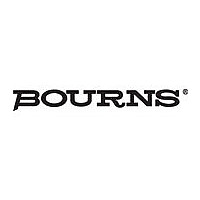TISP61089BSD Bourns, Inc., TISP61089BSD Datasheet - Page 11

TISP61089BSD
Manufacturer Part Number
TISP61089BSD
Description
Dual Forward-conducting P-gate Thyristors Programmable Overvoltage Protectors
Manufacturer
Bourns, Inc.
Datasheet
1.TISP61089BSD.pdf
(20 pages)
SEPTEMBER 2005 - REVISED MAY 2007
Specifications are subject to change without notice.
Customers should verify actual device performance in their specific applications.
Figure 12 shows a typical TISP61089BSD SLIC card protection circuit. The incoming line conductors, Ring (R) and Tip (T), connect to the relay
matrix via the series overcurrent protection. Fusible resistors, fuses and positive temperature coefficient (PTC) resistors can be used for
overcurrent protection. Resistors will reduce the prospective current from the surge generator for both the TISP61089BSD and the ring/test
protector. The TISP7xxxF3 protector has the same protection voltage for any terminal pair. This protector is used when the ring generator
configuration may be ground or battery-backed. For dedicated ground-backed ringing generators, the TISP3xxxF3 gives better protection as
its inter-conductor protection voltage is twice the conductor to ground value.
Relay contacts 3a and 3b connect the line conductors to the SLIC via the TISP61089BSD protector. The protector gate reference voltage
comes from the SLIC negative supply (V
GR-1089-CORE, “1089”, covers electromagnetic compatibility and electrical safety generic criteria for US network telecommunication
equipment. It is a module in Volume 3 of LSSGR (LATA (Local Access Transport Area) Switching Systems Generic Requirements, FR-NWT-000064).
In ‘1089 surge and power fault immunity tests are done at two levels. After first-level testing the equipment shall not be damaged and
shall continue to operate correctly. Under second level testing the equipment shall not become a safety hazard. The equipment is permitted to
fail as a result of second-level testing. When the equipment is to be located on customer premises, second-level testing includes a wiring
simulator test, which requires the equipment to reduce the power fault current below certain values.
The following clauses reference the ‘1089 section and calculate the protector stress levels. The TISP61089BSD needs a 40 Ω series resistor to
survive second level surge testing.
The generic form of test generator is shown in Figure 13. It emphasizes that multiple outputs must be independent, i.e. the loading condition of
one output must not affect the waveforms of the other outputs. It is a requirement that the open-circuit voltage and short circuit current
waveforms be recorded for each generator output used for testing. The fictive impedance of a generator output is defined as the peak
opencircuit voltage divided by the peak short-circuit current. Specified impulse waveshapes are maximum rise and minimum decay times. Thus
the 10/1000 waveshape should be interpreted as <10/>1000 and not the usually defined nominal values which have a tolerance.
Application Circuit
LSSGR 1089
‘1089 Section 4.5.5 - Test Generators
TISP61089BSD High Voltage Ringing SLIC Protector
Generic Lightning or AC Test Generator
BATH
). A 220 nF gate capacitor sources the high gate current pulses caused by fast rising impulses.
or
Figure 13. '1089 Test Generators
each output feed
current-limiting
Z is the fictive
impedance in
Z
Z
Z
Z
Output 1
Output 2
Output n
Output n + 1
Return
AI6XCJ











